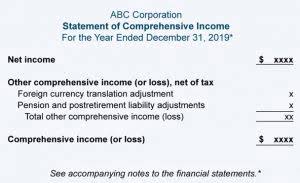
In an asset account, a debit entry on the left side represents an increase, while a credit entry on the t account definition right side represents a decrease. For example, when a business receives cash, it debits the cash (asset) account; when it pays out cash, it credits the cash account. Since management uses these ledger accounts, journal entries are posted to the ledger accounts regularly. Most companies have computerized accounting systems that update ledger accounts as soon as the journal entries are input into the accounting software.
Small Businesses
- These statements allow for historical financial comparisons, help manage expenses efficiently, and assist in future strategic decision-making.
- The terms “financial model” and “financial plan” are frequently used interchangeably, which can lead to confusion.
- The account title is usually written above the “T,” and transactions are recorded on the left and right sides of the vertical line.
- Interest earned by a bank is considered to be part of operating revenues.
- Debits are always positioned on the left side of the T, whereas credits are always placed on the right.
This ensures a complete record of financial events is tracked and can be accurately represented by financial reports. As you can see, the bank account is debited £2.50, increasing its value. The income account (revenue account) is being credited £2.50, increasing its value and making http://qbt.nza.mybluehostin.me/demo1/construction-revenue-recognition-completed/ the transaction balanced. The article explains the concept and purpose of T-account in accounting, highlighting how they help visualize and correctly record transactions. It emphasizes their usefulness in ensuring debits and credits are balanced, especially when multiple accounts are involved. AI can accurately classify transactions, ensure correct debit and credit postings, and speed up journal entries—eliminating the need for manual bookkeeping.
- T accounts assist in budgeting and financial planning by tracking expenses, revenues, and other financial activities.
- T-accounts, a basic accounting tool, support procurement by showing spending patterns, recording transactions, and ensuring accurate financial records.
- This is why T-accounts are used by many small business owners, and both new accountants and CPAs to ensure journal entries in your ledger or accounting software are balanced.
- Learn what T-accounts are in accounting with clear T-account examples, key benefits, and a simple guide to transaction recording.
- Using T accounts, you’ve figured out where everything goes, so you can record this transaction in your accounting software.
- A T-account is a term used in accounting practices to refer to double-entry bookkeeping.
- The seller refers to the invoice as a sales invoice and the buyer refers to the same invoice as a vendor invoice.
“Bank Balance Sheet (T-Accounts)” also found in:
The ledger is comprehensive but complex, while T-accounts are user-friendly for analyzing specific accounts. T-accounts, combined with accounts payable software, can transform how businesses manage invoices and payments, automate workflows and reduce errors. In this guide, we’ll discover what T-accounts are, how to record them, their benefits, and drawbacks. Double-entry accounting is a method of recording every transaction twice to ensure that nothing is missed. Every transaction has two equal parts, a debit one and a credit one.
Automated Invoice Processing with OCR: How It Works and Why Use It

It is also used to refer to several periods of net losses caused by expenses exceeding revenues. Insurance Expense, Wages Expense, Advertising Expense, Interest Expense are expenses matched with the period of time in the heading of the income statement. Under the accrual basis of accounting, the matching is NOT based on the date that the expenses are paid. Fees earned from providing services and the amounts of merchandise sold.
T-Account vs. General Ledger
An investor who has a cash account cannot borrow funds from a broker-dealer and must pay the purchase price of securities with cash. According to Regulation T, an investor may borrow up to 50% of the Grocery Store Accounting purchase price of securities that can be bought using a loan from a broker or dealer. Remember that with every transaction and journal entry there will be two accounts that are affected. The source of this increase to the bank account is capital – the owner investing in the business. The T-account can also be used in determining the proper account balance or to determine the amount to be entered in order to arrive at a desired balance. I always use two (or more) T-accounts when determining how to adjust an account balance.
